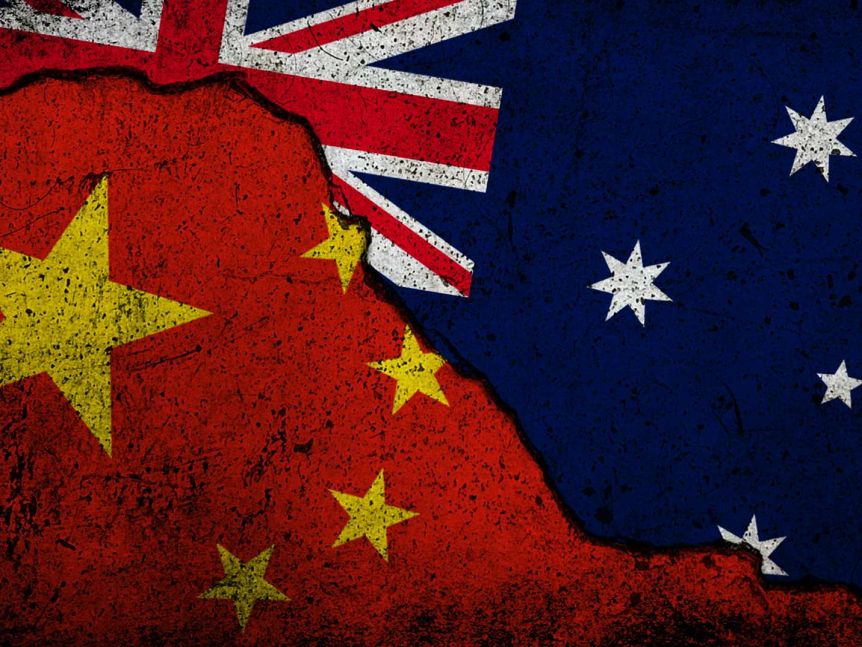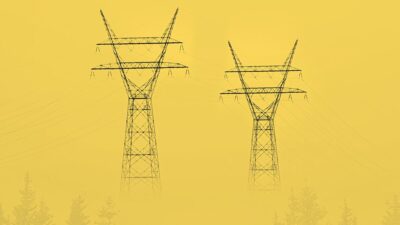So, what’s Plan B?
By Ian Verrender (ABC Australia)
For Australian exporters suddenly caught in the headlights of an increasingly hostile regime in Beijing, the answer, it appears, is: there isn’t one.
If it hasn’t sunk in quite yet, the chances of a rapprochement are slimming by the day and any chance of mending the relationship now seems out of reach.
Plan A, so far, has involved increasingly shrill cries from our business leaders berating Canberra and the media for ruffling the waters and endangering our lucrative $250 billion two-way trade with the world’s second-biggest economy.
What’s required, they claim, is a “reset”, otherwise known as capitulation. Even if that ever was an option, it’s way too late.Your big questions about China trade war answeredWe asked you to put your burning questions to three of the ABC’s China experts. These were some of the top responses.Read more
After years of covert infiltration into our political, cultural and educational institutions, the Chinese Communist Party, a regime that tolerates no dissent at home or abroad, now is making no bones about what it has always expected from Australia: subjugation.
Having realised that won’t be happening, and with its dreams of a vast quarry and food bowl run by a compliant colony at the bottom of the region now in tatters, it is rapidly shifting its attention elsewhere for produce.
The speed and scale of Beijing’s retaliation and the increasingly vitriolic language it has employed in the past eight months should be warning enough that we no longer can count on China as a stable source of income.
It is time we moved on. Beijing already is well advanced on its decoupling strategy as it thumbs its nose at global trade rules and systematically shuts Australia out of every conceivable commodity with the most spurious of excuses.
The only Australian product that will not attract any penalty from Beijing, for possibly a decade, is iron ore. It is the vital ingredient for China’s ongoing infrastructure stimulus programs. Without it, China would struggle to maintain economic growth. That, in turn, would endanger employment and social stability, a prospect that sends shudders through Chinese Communist Party leadership.

For the time being, it cannot source iron ore in sufficient quantity anywhere else. It is the one area where Australia holds the power in the two-way relationship. More on that later.
For anyone who expects a return to normal from the massive China tourism trade or education industry once COVID-19 restrictions are lifted, dream on.
In 2018/19, the last time we had normal readings, Chinese tourists topped the list with almost 1.5 million arrivals. Chinese students, mostly to our universities, dominated our academic exports, contributing about $12.1 billion.
That may make a serious dent in our education sector exports, but it may help restore integrity to our higher education system.
It is not that ordinary Chinese citizens won’t want to come. It is just that they will be discouraged and it is unlikely they will ever arrive in the same numbers.
How we came close to total domination by China
While most commentators point to Prime Minister Scott Morrison’s call for an independent investigation into the origins of COVID-19 virus as the turning point, the deterioration in our trading relationship goes back a decade.
It began with a spat over iron ore. Rio Tinto, on the verge of collapse in the wake of the global financial crisis, secured a deal with a Chinese government-owned firm called Chinalco to hand over control of the world’s most valuable iron ore mines in Western Australia’s Pilbara.Australia’s place in the global order is shiftingScott Morrison has sent a message to China that Australia will not be America’s “deputy sheriff” and Canberra won’t be making decisions based on a choice between Washington and Beijing, writes Stan Grant.Read more
The Chinese Communist Party effectively would have been delivered control of global iron ore pricing, and with it, Australia’s future economic wellbeing.
It was an outrageous proposal, struck at the bottom of the market, that enraged Rio shareholders and sent shivers through Canberra and rival iron ore producers. Eventually, it was kiboshed by a proposal from BHP to merge the pair’s Pilbara operations; a concocted deal that was never likely to be approved by competition regulators.
Retribution was swift. Within weeks of Rio rescinding the Chinalco agreement, its entire Shanghai-based marketing team — led by Australian Stern Hu — was arrested on bribery charges and eventually jailed after secret court hearings.
Had that deal gone ahead, we now would be powerless.
Iron ore: China’s Achilles heel
Late last week, an irate Luo Tiejun, head of the China Iron and Steel Association, demanded an explanation via a video conference call from senior BHP executives over the soaring price of iron ore.
The meeting reportedly involved a “candid exchange of views” on BHP’s production, sales and pricing.

Iron ore is the economic lifeblood of China. Like most major economies, China’s growth is driven by stimulus. A huge part of that revolves around infrastructure spending, on residential and office towers and high-speed rail. All of it requires steel. And the key ingredient is iron ore.
Without it, growth would slide and unemployment rise, resulting in social unrest.
For the past few months, iron ore has been on a tear. It began to eke out gains as China, having emerged from the grip of COVID-19 in the middle of the year, attempted to fire up growth.

But if anyone is to blame for the sudden price hikes, it is China.
It’s a simple supply-demand equation. China has ramped up steel production. And Brazil, the second-biggest supplier after Australia, has experienced serious problems that have curtailed supplies.
In addition, speculators, sniffing potential gains in a zero-interest rate world, have entered the fray and sent prices soaring.
Little wonder Beijing is angry. The cost of keeping its economy on a growth trajectory suddenly has escalated and exposed iron ore as its Achilles heel.
Australia supplies 65 per cent of all China’s iron ore. We send far more iron ore to China than Brazil (the second-biggest supplier) produces in total. The only other potential supplier, the giant Simandou mine in Guinea, West Africa, has been mired in controversy, coups and corruption for more than a decade. It was supposed to be operational in 2015 but is only now under construction.
China needs iron ore. And for that, it needs Australia. It is a powerful card to have up our sleeve, although one any Australian government would be loath to play.
Is China’s economy as strong as we’re told?
It is the world’s second-biggest economy. And for those who love to extrapolate, it is on track to overtake the United States as the dominant economy within the next few decades or so. It has a rapidly expanding military and is the dominant regional force.
Global power is shifting.Have we hit peak China?As trade and political tensions simmer, speculation swirls about what’s really going on between the two nations — and what’s next on a Chinese sanctions “hit list”.Read more
But China is not without its problems. Its phenomenal growth has been built on a debt binge, particularly during the past decade. And the real problem is corporate debt.
Late last month, a string of defaults amongst large government-owned corporations sent shockwaves through global debt markets, as government-linked firms previously had been considered safe.
State-run coal miner Yongcheng Coal and Electricity blamed tight liquidity for failing to meet its debt payments, while Tsinghua Unigroup, a top chipmaker and an auto manufacturer linked to BMW also defaulted.
That the Government allowed these defaults to take place has analysts divided. Some argue it demonstrates a new-found maturity, that Beijing no longer will tolerate corruption and will not rush to the aid of beleaguered state-owned enterprises. Others are not so sure, pointing to serious economic issues that had been exposed by the US trade war with Beijing.
Last year, authorities were forced to step in and take control of Baoshang Bank, the first such bail-out in more than two decades, indicating that all was not well within the financial system long before the pandemic took hold.
Where to now?
At a leadership level, the Australia-China breakdown now seems beyond repair. Australian leaders have been off the invitation list to the Bao Forum — China’s annual economic gabfest on Hainan — for years. Chinese ministers refuse to return calls.
Almost every Australian export industry has found itself under attack and the ferocity is being lifted almost daily.
It will take years, perhaps decades, for our exporters to secure new markets. But it has been done before. When the United Kingdom aligned itself to Europe almost half a century ago, our exports gravitated towards the expanding markets of Asia and North America before finally settling on China.
For years, however, there have been warnings about our overreliance on one market, and the potential danger that posed in the event of either an economic or political meltdown.
That day has arrived. It’s time for a Plan B.





